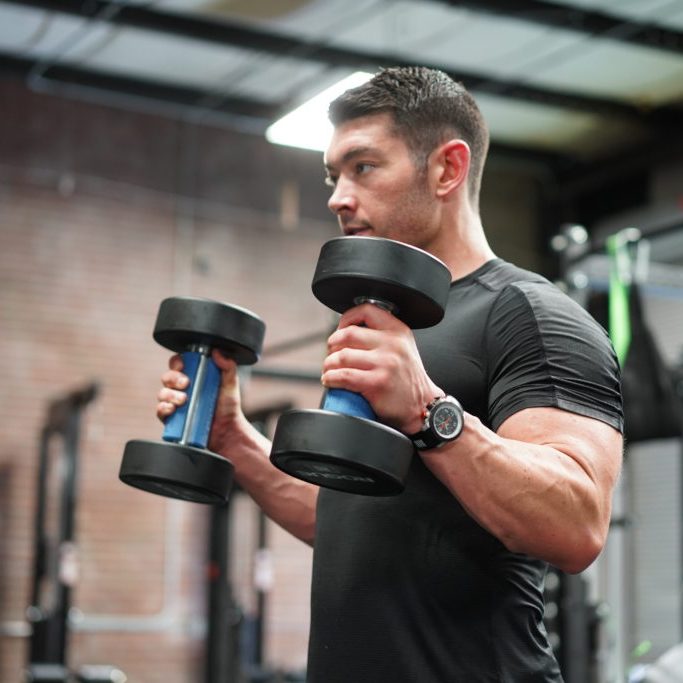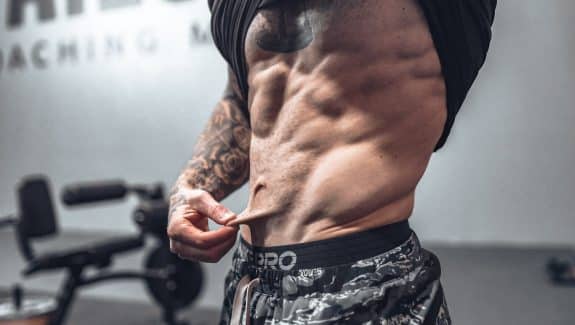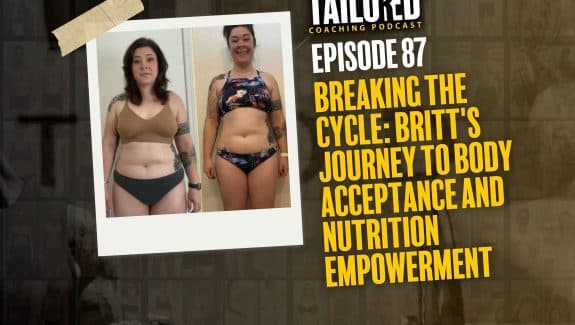Testosterone is perhaps the most well known and most sought after hormone in the male body. It is commonly known as a prerequisite for strength, muscle mass, bone mass, fat distribution and virility. Yet, over the past several decades male testosterone levels have been steadily declining. Studies have shown adult men are walking around with just fractions of the levels of our preceding generations (probably somewhere between ⅓ and ½ to be precise) even just comparing the 20th century to today.
But, what gives? We lift with purpose, and we eat according to our macros, yet somehow we pale in comparison to men from just a few decades prior.
Stress and Test
Anatomically speaking, we are the same human beings with the same production capacity as our ancestors, but what has changed as we live our daily lives is our environment and our nutrition. Think of it this way – we are using the same out of date machinery (biomechanics), but trying to process increasingly demanding modern day problems or applications. You wouldn’t expect a 2002 Dell PC to do the work of a 2018 Macbook pro, but that is what we ask our body to do every day in the 21st century. With the rising demands of our environment we face an increase in stress, which is matched by the release of cortisol, a stress hormone.
Prolonged chronic stress whether it be physical, emotional, chemical or dietary stress activates the sympathetic nervous system (your “fight or flight” response). When under chronic stress, the body is not focused on reproduction, but on survival. As a result, the creation of reproductive hormones like testosterone is not a priority and gets placed on a back burner until stress is mitigated and raw materials, or resources are plentiful. Therefore, if you want the edge in maximizing testosterone output, you must first manage cortisol.
If there is one thing you take away from this article, remember this: Cortisol and testosterone are inversely proportional. This means that as cortisol levels go up testosterone levels normally go down.
The mechanism primarily occurs due to the fact that cortisol indirectly inhibits production of testosterone in the testicles by inhibiting “steroidegenic acute regulatory protein”. This sciency term for a complex protein (“STAR” for short), is responsible for regulating the transfer of cholesterol within your mitochondria which is the rate limiting step in the production of your natural steroid hormones like testosterone.
In other words: control cortisol and you have less interference with that cholesterol transfer, and less inhibition of testosterone production means you’re one less step away from physical and mental badassery. The good news is we can control cholesterol and cortisol through nutrition and lifestyle protocols.
Easier said than done, right? There are three primary ways to control cortisol:
1) Through parasympathetic activities,
2) Through nutritional intervention, and
3) Through managing circadian rhythm
What are Parasymapthetic Activities?
Some top strategies to disengage your sympathetic (fight or flight) nervous system and engage your parasympathetic nervous system are: meditation, foam rolling and mobility drills, sleep, eating properly (per your dietary protocol), yoga, music, supplementing with adaptogenic herbs, and low intensity outdoor activity (e.g., walking).
This assumes you are already moderately active and engaging in some physically strenuous exercise such as resistance training 3-5 days per week. Multiple iterations of testosterone research have consistently shown increases in serum testosterone concentration following resistance exercise.
Testosterone is affected by a combination of factors including the amount of muscle tissue mass stimulated (think compound exercise), volume of exercise performed (sets x reps x load), and intensity of exercise (both percentage of your 1RM and also the perceived intensity – think in terms of rated perceived exertion).
[This is why coaching is so imperative, balancing these nervous system drivers properly through intelligent program design is exactly how you achieve results. Apply Now for a Free Strategy Call to learn more about coaching.]
What Nutritional Interventions Help Manage Cortisol?
We can also mitigate cortisol response through proper nutrition and peri-workout supplementation (European Journal of Applied Physiology, 2006). Insulin, the hormone secreted by your pancreas after a rise in blood sugar, also works in opposition of cortisol because they are called “counter regulatory hormones”.
For example, exercise induces reduction in blood glucose, which is *counter-regulated* by increases in levels of epinephrine, norepinephrine, cortisol, and growth hormone. The rise in blood concentrations of these *counter-regulatory hormones* is dependent upon both exercise intensity and duration, and is proportional to the rate of glucose uptake by the contracting skeletal muscle.
Simply put, if you are working out intensely you will likely be burning blood glucose and having a small cortisol spike during your workout. By timing the influx of insulin (ideally around our training sessions) we can further tilt the cortisol balance in our favor by opposing it with insulin, creating a more optimal environment for testosterone production. A simple example of this would be having essential amino acids and cyclic dextrin during a workout followed by a whole food meal post workout.
Additional supplements for the management of testosterone and cortisol include, but are not limited to KSM 66 Ashwaganda, Longjack, DIM, and Fenugreek. With most herbal formulations you are working to indirectly raise your testosterone through either reducing aromatization (the conversion to estrogen), balancing cortisol, or improving free testosterone levels – meaning less of your testosterone would be bound in the blood to things like SHBG (sex hormone binding globulin).
How Does Your Circadian Rhythm Impact Testosterone?
The phrase “circadian rhythm” is a complicated way of saying your biological clock or daily schedule. If a person’s sleep pattern has been disrupted for some time, then resetting this rhythm can have a profound impact on hormonal output.
Even partial sleep reduction lasting one week at 5 hours per night has been shown to decrease overall testosterone production by 15 percent in healthy young men. Another study revealed that men who slept for 4 hours per night had an average of 200-400 ng/dl testosterone levels, which was lower than men who slept 8 hours per night and had closer to 500-700 ng/dl.
In a study of chinese males, researchers calculated that an extra hour of sleep led to about 15% higher testosterone production. The main takeaway here is to shoot for 8 hours of sleep, and maintain adherence to a similar sleep/wake schedule throughout the week.
How Does Cholesterol Impact Testosterone?
The importance of cholesterol cannot be understated. From a non-science perspective think of this testosterone production process as a pyramid where each level is dependent on the prior level’s foundation. Testosterone comes from pregnenolone and pregnenolone is manufactured from cholesterol.
On a molecular level, cholesterol is the precursor of the five major classes of steroid hormones, because without it we cannot manufacture pregnenolone, also known as the “mother hormone”. Cholesterol starts off in the body as a large molecule with essentially 27 units. The first stage in the synthesis of steroid hormones is the removal of 6 of those units of the cholesterol molecule to form pregnenolone (a hormonal precursor to testosterone).
After we have pregnenolone the body can make an intermediary hormone that allows us to begin creating androgens like testosterone. Without this middle link, we lack the structural foundation for our testosterone on a molecular level.
This is further evidenced by researchers who compared the dietary records and blood tests of 12 men with at least one year of weight training; the researchers found significant correlations between Testosterone levels and total and saturated fat intake, so be mindful of getting a balanced ratio of monounsaturated, saturated and polyunsaturated fats. We can obtain healthy fats and cholesterol precursors in the diet through whole eggs (preferably free range), grass fed butter, oils, and lean red meats (grass fed is best if you can get it).
Testosterone Takeaways
While testosterone is characterized by strength and indestructibility it is possibly one of the body’s least resilient hormones. Simple changes in sleep, nutrition, and stress levels can have a significant impact on your hormonal output and how your body prioritizes production.
Simply put, we were designed for survival, not to maintain “cover-model esque muscle” year round. Fortunately, many of these factors fall within the realm of our control. The next time you are looking to supercharge your system remember that natural cortisol control and cholesterol may just be the best testosterone boosters there are.
So remember – if you are looking to optimize your natural testosterone levels, implement these five key points in your regimen:
- Strive for 8+ hours of sleep per night with a similar sleep/wake schedule for a healthy circadian rhythm
- Prioritize Peri-Workout Nutrition
- Consider implementing adaptogenic herbs like Ashwaganda
- Eat your healthy fats and dietary cholesterol
- Balance your sympathetic and parasympathetic activities, simply put – manage stress!
About the author: Sam has seen both sides of the spectrum when it comes to health and physique development. From being a not-so-fit, chubby teenager, to being an underweight 130lb college kid who scraped and “scienced” his way to becoming a nationally qualified physique competitor and coach in the fitness industry. Sam strives to further develop his intellect in all things pertaining to training, nutrition, endocrinology and athletic science to better himself, his business and his clients. In addition to serving as a training and nutrition coach, Sam is a certified hormonal specialist with a passion for helping clients correct endocrine issues with the assistance of diet, exercise, and supplementation. You can learn more about Sam and his methods @sammillerscience and @oracle_coaching on instagram.
→ https://www.ncbi.nlm.nih.gov/books/NBK22339/
→ Biochemistry. 5th edition.
→ Berg JM, Tymoczko JL, Stryer L.
→ New York: W H Freeman; 2002.
Volek JS, Kraemer WJ, Bush JA, Incledon T, Boetes M. Testosterone and cortisol in relationship to dietary nutrients and resistance exercise. J Appl Physiol 1997;82:49-54.
→ Sallinen JJ, Pakarinen AA, Ahtiainen JJ, Kraemer WWJ, Volek JJS, Häkkinen KK. Relationship between diet and serum anabolic hormone responses to heavy-resistance exercise in men. International journal of sports medicine 2004;25:627-33.
→ Loebel Chad C.; Kraemer, William J.
Journal of Strength and Conditioning Research: February 1998. Testosterone and Resistance Exercise in Men


























































































































































































































































































































































































































































































